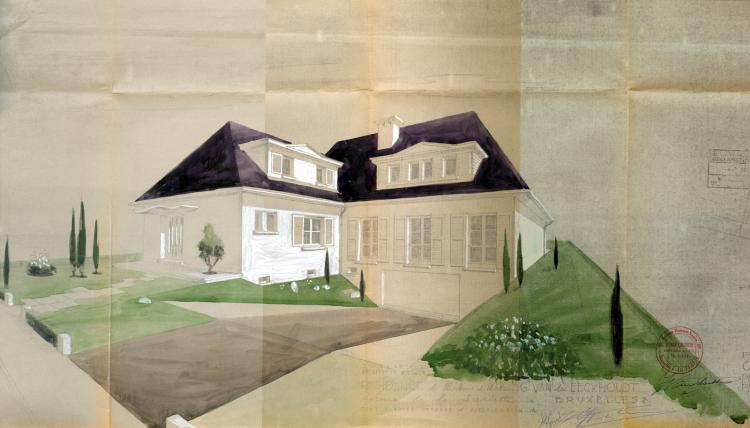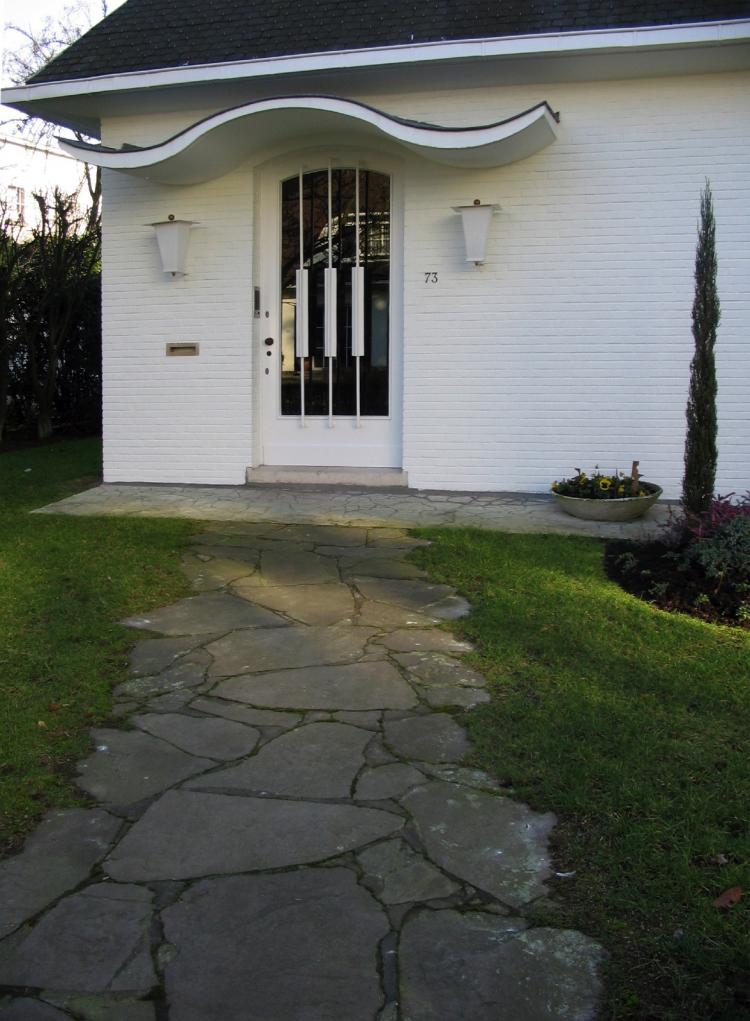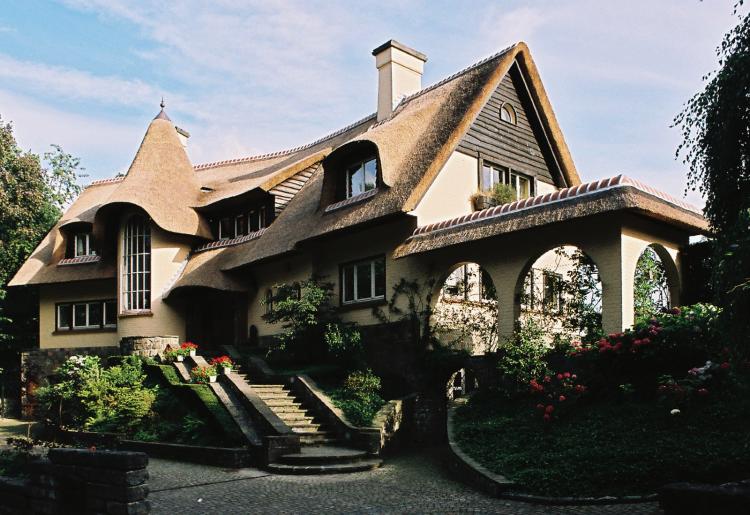Nostalgic conformism
Traditionally inspired
architecture dominates for around ten years following the war. On the other
hand, from 1955, historical styles become rarer, but nevertheless continue to
dominate in private housing. In this area, the architect is always in fact
directly dependent on the often nostalgic taste of his or her client.
In 1963, this observation leads the architect Georges De Hens to sermonize his colleagues: if the client requests an entrance made of white stone with a column on either side topped with an Ionic capital, know how to put them off or politely refuse your services (La Maison, issue 7, 1963).
Ornamentation lies in the innermost depths of human sensibility, and the modern human […] has not managed to overcome this sensibility. Émile Henvaux (La Maison, issue 12, 1950).
In 1963, this observation leads the architect Georges De Hens to sermonize his colleagues: if the client requests an entrance made of white stone with a column on either side topped with an Ionic capital, know how to put them off or politely refuse your services (La Maison, issue 7, 1963).
Ornamentation lies in the innermost depths of human sensibility, and the modern human […] has not managed to overcome this sensibility. Émile Henvaux (La Maison, issue 12, 1950).
The old-style inspired architecture of the post-war period often raises a smile today. Rare are the artists like the architect Jacques Dupuis who succeed in brilliantly harmonising the old and the modern.
At the end of the 1950s, the single family house with monumental pretensions is challenged by the modern-style house, which bears the forms popularised by the Expo.










